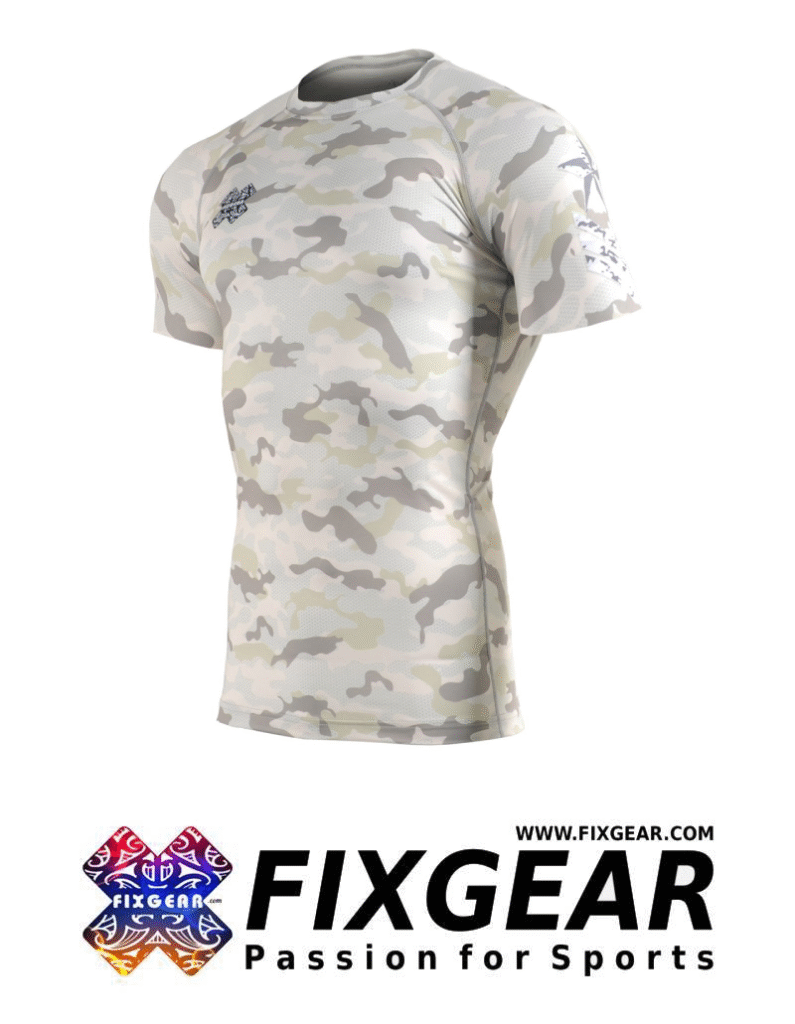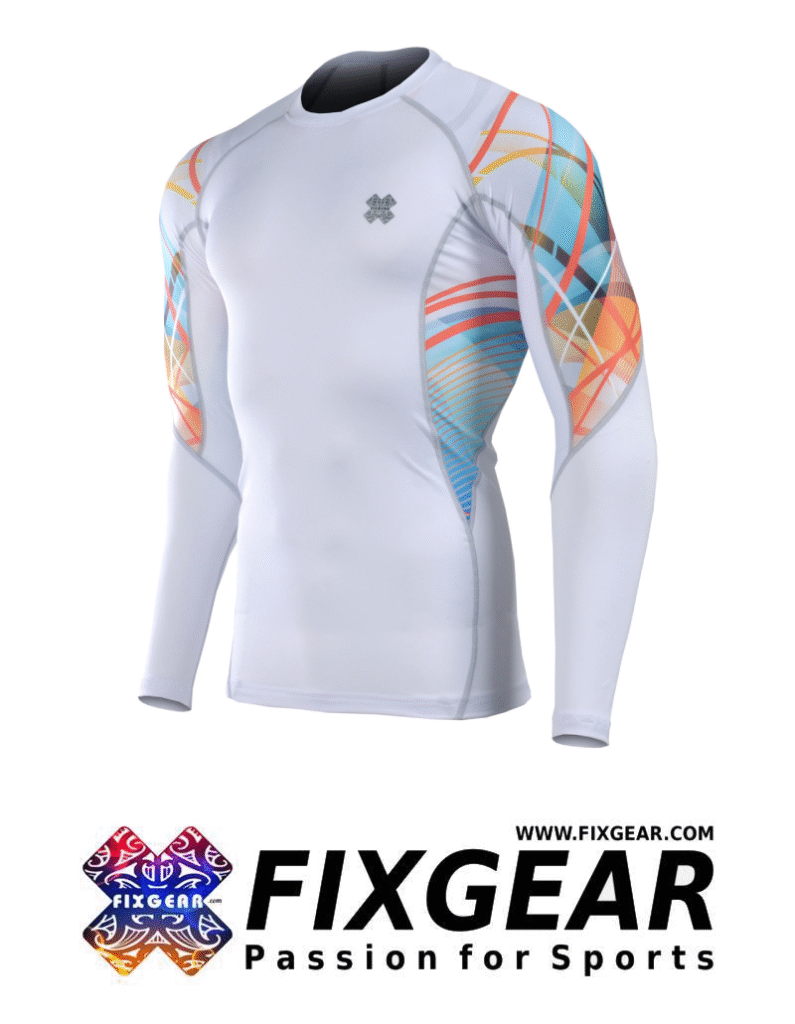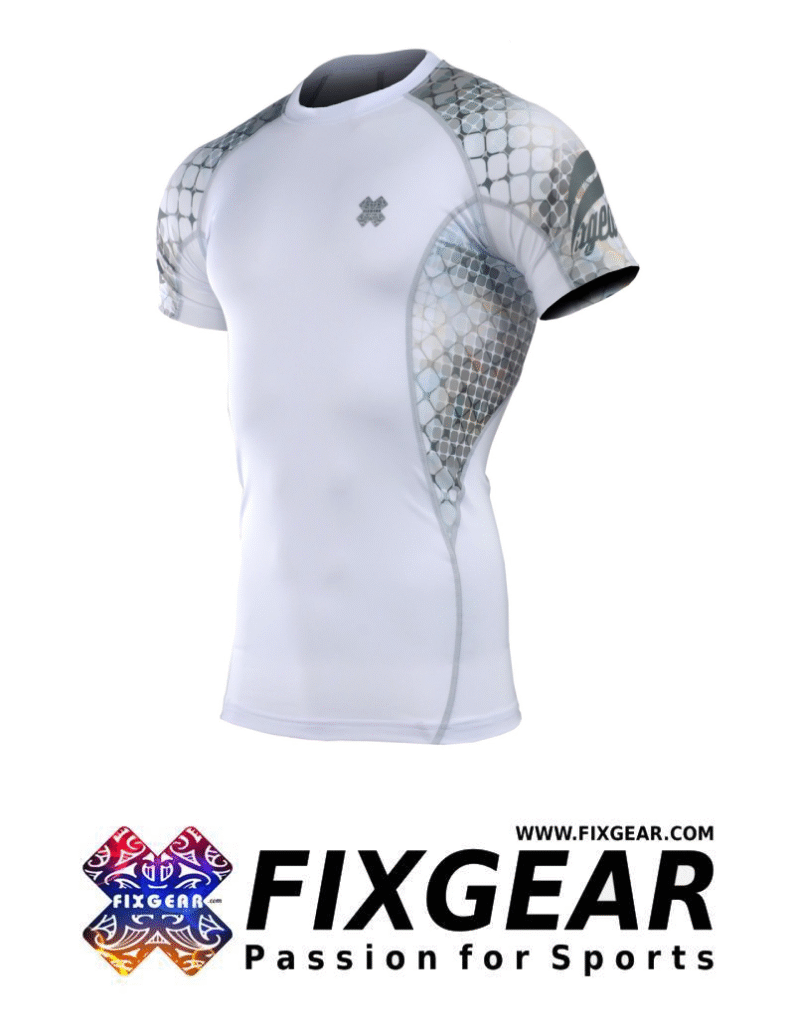A compression base layer serves several vital functions, particularly for athletes and active individuals:
1. Muscle Support: It supports the muscles, reducing muscle fatigue and soreness during and after physical activity.
2. Improved Circulation: The graduated compression helps enhance blood flow, increasing oxygen delivery to muscles and aiding in recovery.
3. Moisture Management: Compression base layers are often made from moisture-wicking materials that help keep the skin dry by drawing sweat away from the body.
4. Temperature Regulation: They can help regulate body temperature by providing warmth in cooler conditions and ventilation in warmer conditions.
5. Reduced Chafing: The snug fit minimizes movement of the fabric against the skin, which can help reduce chafing and irritation during exercise.
6. Enhanced Performance: Compression performance by stabilizing muscles and improving circulation.
A compression base layer stabilizes muscles and improves circulation, offering support, comfort, and performance benefits during physical activities.
1 – How tight should the compression base layer be?
Compression base layers should fit snugly against the skin without causing discomfort or restricting movement. They should feel tight enough to provide support and enhance circulation but not so tight that they cause pinching or constriction. When trying them on, you should be able to move comfortably and breathe easily.
2 – Why do athletes wear tight clothes?
Athletes wear tight clothes for several reasons:
1. Compression: Tight clothing provides compression that can enhance blood circulation, reduce muscle vibration, and decrease the risk of injury during physical activity.
2. Support: Tight garments offer better muscle support, which can improve performance and recovery.
3. Moisture Management: Many tight athletic clothes are made from moisture-wicking materials that help keep the body dry and comfortable by drawing sweat away from the skin.
4. Aerodynamics: Tight-fitting clothing reduces drag and resistance, allowing athletes to move more efficiently, especially in sports like cycling or running.
5. Temperature Regulation: These clothes can help regulate body temperature by providing insulation or cooling effects, depending on the material used.
6. Psychological Boost: Wearing fitted clothing can enhance confidence and promote competition readiness.
3 – Should the base layer be tight or loose?
The base layer should be tight and designed to fit snugly against the skin. This tight fit helps with moisture management, provides compression for improved circulation, and enhances overall comfort during physical activities. Loose base layers may not offer the same benefits.
4 – Are compression shirts the same as thermals
Compression shirts and thermals serve different purposes and are not the same.
• Compression Shirts: These are designed to fit tightly against the skin, providing support, reducing muscle vibration, and enhancing circulation. They are often made from stretchy, moisture-wicking fabrics that help keep the body dry during physical activity.
• Thermals: Thermal shirts are designed to provide insulation and warmth. They are typically made from thicker materials that trap body heat, making them ideal for colder weather. While they may also fit snugly, their primary function is to retain heat rather than provide compression.
In summary, while both types of clothing can be form-fitting, their purposes and materials differ significantly.
5 – Should I wear a base layer in summer?
You can wear a base layer in summer, especially if it’s made from lightweight, moisture-wicking materials. These base layers can help keep you dry by drawing sweat away from your skin and transferring it to someone else. However, choosing a breathable fabric is essential to ensure comfort in warmer temperatures.
6 – How tight should a compression top be?
A compression top should fit snugly against the skin without being restrictive. It should feel tight enough to provide support and improve circulation but should not cause discomfort or limit your range of motion. When trying on a compression top, you should be able to move freely and breathe comfortably.
7 – What are the benefits of base layers?
Base layers offer several benefits, including:
1. Moisture Management: They wick sweat away from the skin, keeping you dry and comfortable during physical activities.
2. Temperature Regulation: Base layers help maintain your body temperature by trapping warmth in cold conditions or allowing heat to escape when it’s warm.
3. Comfort: They provide a soft, comfortable layer against the skin, reducing chafing and irritation during movement.
4. Support: Compression base layers can enhance circulation and support muscles, potentially reducing the risk of injury.
5. Versatility: Base layers can be worn in various conditions, making them suitable for different activities and weather types.
6. Layering: They are an excellent foundation for layering, allowing easy adjustments based on changing temperatures.
8 – What are the compression bottoms for?
Compression bottoms are designed for various purposes, including:
1. Muscle Support: They support the muscles in the legs, which can help reduce fatigue and soreness during and after physical activity.
2. Improved Circulation: Compression bottoms promote better blood circulation, enhancing performance and aiding recovery.
3. Reduced Muscle Vibration: They minimize muscle oscillation during movement, potentially decreasing the risk of injury.
4. Moisture Management: Many compression bottoms are made from moisture-wicking materials that help keep the skin dry by drawing sweat away.
5. Temperature Regulation: They can help regulate body temperature, keeping you warm in cold conditions and cool in warmer weather.
6. Comfort and Fit: Compression bottoms offer a snug fit that can enhance comfort during various activities, from running to training sessions.
9 – Why wear a base layer running?
Wearing a base layer while running offers several benefits:
1. Moisture Management: Base layers wick sweat away from the skin, helping to keep you dry and comfortable during your run.
2. Temperature Control: They help regulate body temperature by providing insulation in cooler weather while allowing breathability in warmer conditions.
3. Comfort: A base layer’s snug fit minimizes chafing and irritation, allowing for a more comfortable running experience.
4. Muscle Support: Compression base layers can enhance circulation and support the muscles, which may help reduce fatigue.
5. Reduced Muscle Vibration: They can help stabilize muscles during movement, potentially decreasing the risk of injury.
6. Layering: Base layers are an excellent first layer for additional warmth or protection when running in varying weather conditions.
10 – What does compression do for recovery?
Compression aids in recovery by offering several benefits:
1. Improved Blood Circulation: Compression garments enhance blood flow to the muscles, facilitating the delivery of oxygen and nutrients needed for recovery.
2. Reduced Muscle Soreness: Wearing compression can help decrease delayed onset muscle soreness (DOMS) after intense workouts, allowing for a quicker return to activity.
3. Decreased Swelling: Compression helps minimize swelling and inflammation in the muscles and joints, aiding overall recovery.
4. Muscle Support: By supporting the muscles, compression garments can help prevent excessive muscle movement that might lead to injury during recovery.
5. Faster Recovery Time: Compression can contribute to a more efficient recovery process, helping athletes feel ready for their next workout sooner.
11 – What does compression do to rock layers?
Compression affects rock layers in several significant ways:
1. Folding: When rock layers are subjected to compressive forces, they can bend and fold, creating structures such as anticlines and synclines. This process is typical in areas where tectonic plates collide.
2. Faulting: In some cases, if the pressure exceeds the strength of the rock, it can lead to fracturing, resulting in faults. This can cause significant geological changes and earthquakes.
3. Metamorphism: Compression can lead to metamorphism, where existing rocks are transformed into new types of rocks (metamorphic rocks) due to heat and pressure. This process alters the mineral composition and texture of the stones.
4. Thickening: Compression can cause rock layers to thicken as they are pushed together, significantly changing an area’s landscape and geological features.
5. Strain: Depending on the intensity of the compression, the rocks can experience elastic or plastic strain, which can affect their structural integrity and stability.
12 – Are compression shirts good in cold weather?
Compression shirts can be suitable for cold weather, especially if made from moisture-wicking and insulating materials. Here are a few benefits of wearing compression shirts in cold conditions:
1. Layering: They can serve as an effective base layer, providing warmth while allowing for additional layers.
2. Moisture Management: Compression shirts wick away sweat from the skin, helping keep you dry and preventing chills associated with damp clothing.
3. Muscle Warmth: Compression shirts’ snug fit helps retain body heat, keeping muscles warm and reducing the risk of injury.
4. Support: They provide muscle support, which can enhance performance and comfort during cold-weather activities.
Overall, wearing a compression shirt in cold weather can help you stay warm, dry, and comfortable while engaging in outdoor activities.




